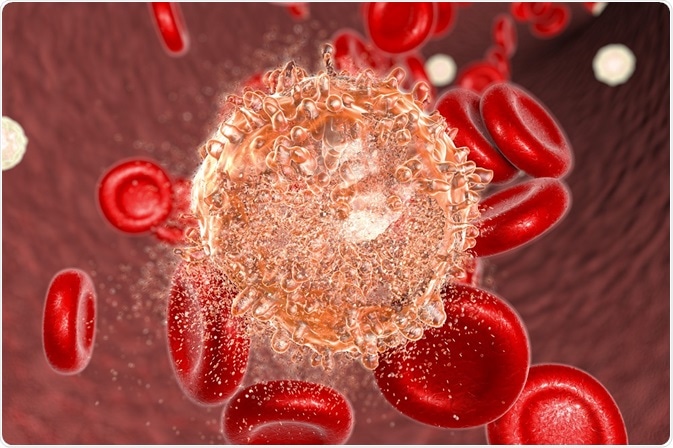There are six features, or hallmarks, of cancer that are used to organize our understanding of the stage of the disease.

Credit: Kateryna Kon/Shutterstock.com
Typically, normal cells evolve progressively into a neoplastic state, as they do this, there are a succession of changes, known as hallmarks, that occur along the way. This allows cancer cells to acquire traits leading to formation of tumors and malignancy.
Tumors are complex tissues containing many different cell types interacting with one another. Normal cells are recruited as well, forming tumor-associated stroma, as participants in tumorigenesis. Stromal cells contribute to hallmark capabilities of cancer cells.
This article goes into detail about the following six characteristics that are considered to be the defining hallmarks of cancer:
- Sustained proliferative signaling
- Evading growth suppressors
- Activating invasion and metastasis
- Enabling replicative immortality
- Inducing angiogenesis
- Resisting cell death
Sustained proliferative signaling
Normal cells control production of their growth signals, maintaining homeostasis of cell number and normal tissue architecture. Cancer cells deregulate this control system. The ability to sustain proliferation is achieved in several ways. First, cells may produce growth factor ligands to which they respond.
Second, cancer cells may signal normal cells in the tumor-associated stroma, which then supply the cancer cells with growth signals. Deregulation of receptor signaling may occur through elevation of receptor proteins on the surface of the cancer cells. Cells may also become independent of growth factor through constitutive activation of signaling pathways downstream of receptors.
Evading growth suppressors
Cancer cells avoid programs that would otherwise negatively regulate cell proliferation normally dependent on tumor suppressor genes. Tumor suppressors limit cell growth and proliferation.
There are two canonical suppressors, TP53 and RB, and each operating as nodes within regulatory circuits. The RB protein receives signals from extracellular and intracellular sources and determines whether a cell should go through a growth-and-division cycle. TP53 receives inputs from stress and abnormality and halts cell cycle progression until the system is returned to normal.
Activating invasion and metastasis
The process of invasion and metastasis is a cascade of changes in the cell as follows:
- Local invasion progression
- Intravasation into nearby blood and lymphatic vessels
- Transit of cancer cells through the lymph and blood system
- Escape of these cancer cells into distant tissues
- Formation of micrometastases
- Growth of lesions
Enabling replicative immortality
Cancer cells need unlimited replicative potential in order to form tumors. Most cells are only able to pass through a limited number of growth-and-division cycles due to senescence and cell death.
When cells in culture overcome these limitations, they are considered to have undergone immortalization. This process is believed to be linked to an ability to maintain telomeres, structures protecting the ends of chromosomes, which serve as a sort of cellular clock running down each generation of cells.
Inducing angiogenesis
Tumors require oxygen and nutrients in order to grow. New blood vessels are formed to supply these elements to the cells through the process of angiogenesis. Regulatory mechanisms in the cell normally control the process of angiogenesis. Cancer cells show activation of angiogenesis pathways, leading to formation of blood vessels supplying the tumor.
Resisting cell death
Programmed cell death, or apoptosis, is one of the defenses of the body against cancer cells. Apoptosis is triggered by certain physiologic processes in cancer cells during the course of tumorigenesis. These include signaling imbalances caused by oncogenes and DNA damage. Cancer cells overcome this defense of the cell.
One of the common mechanisms for this is the loss of TP53 tumor suppressor function, which eliminates a critical damage sensor in the system. Tumors may also have increased levels of antiapoptotic regulators and survival signals, or downregulated proapoptotic factors.
Further Reading